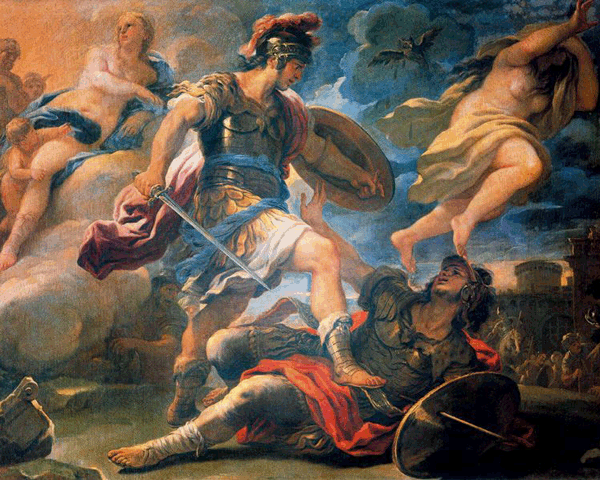| Home | Setting | Characters | Plot Twists | Utilities |
Crypta Romana: Setting

Five hundred years before the birth of Christ, Rome had been in existence for nearly three centuries, ruled by a series of kings who traced their lineage to the mythical Romulus. Through Romulus, the Roman kings claimed to be sons of Troy, direct blood of Aeneas who fled the Greeks in 1184 BC, and founded his colony on the Latin coast. Legend has it that Aeneas was the son of Aphrodite who aided him on his many adventures as he crossed the Inner Sea and came at last to the mouth of the great river. Aeneas defeatues Turnus, king of the Rutuli and married the prophetess Lavinia, daughter of the king of the Latins. In ages to come the Roman Emperors, Julius and Augustus would claim the same heritage to justify their rule. At the time of our story, in the year 510 BC, Tarquin the Proud is the seventh king of the Romans. He lives in a walled city that is much smaller than it will become, but includes many of the ancient sites. The temples of Vesta, Janus, Jupiter, Minerva and Juno are built of marble with tall columns. Rome has been dividided into districts and there is a social structure or patricians and plebs, each with their own political power and important representatives.
In ancient times, king Numa decreed the trades of artisans. He created the companies of musicians, goldsmiths, carpenters, dyers, shoemakers, skinners, braziers, and potters; and all other handicraftsmen he composed and reduced into a single company, appointing every one their proper courts, councils, and religious observances. The gods of Rome have not yet been associated with the Greek pantheon, and they are a much grimmer bunch, focused on the daily grind of life and needful of regular sacrifices. Many of the priests of each temple are augers, fortune tellers who read the omens in animal entrails and patterns of objects in nature. Rome is not yet the center of the world, but it is a powerful, prosperous kingdom in central Italy. The language spoken is a forerunner of Latin, though Etruscan, Greek and Carthaginian are heard on the streets and in the markets. Writing is a common skill among the patricians, though parchment, papyrus and ink are expensive. Most records are kept on scrolls. Important books are made of metal plates, usually bronze, inscribed with a sharp stylus. The economy is mostly a system of barter and community trades, but the existence of patrician classes who produce little but influence much has forced the creation of a simple monetary system based on small ingots of bronze called Aes Rude. Their value is literally their weight in bronze and no tradesman who deals with the upper crust will be without a scale to calculate the value of each transaction. In game terms we will assign rough evaluations to Aes Rude as follows:
Typically a bronze "Ace" would be cast as a 10 lb ingot, stamped with a pattern of lines to make it easy to break into smaller chunks. As you can imagine, hauling around lumps of bronze was not popular. For ready cash, the rich relied on Greek silver coins which came in various sizes and values. That scale must be able to measure down to 1/10th of an ounce. Again the following is a rough equivalent for gaming terms rather than an historically acurate figure:
A small silver coin or a one pound Ace would buy you a goose, or more likely a decent meal at a tavern. (Despite the gouging ways of their current compatriots, the meal will include bread and water as part of the basic charge!) 
|